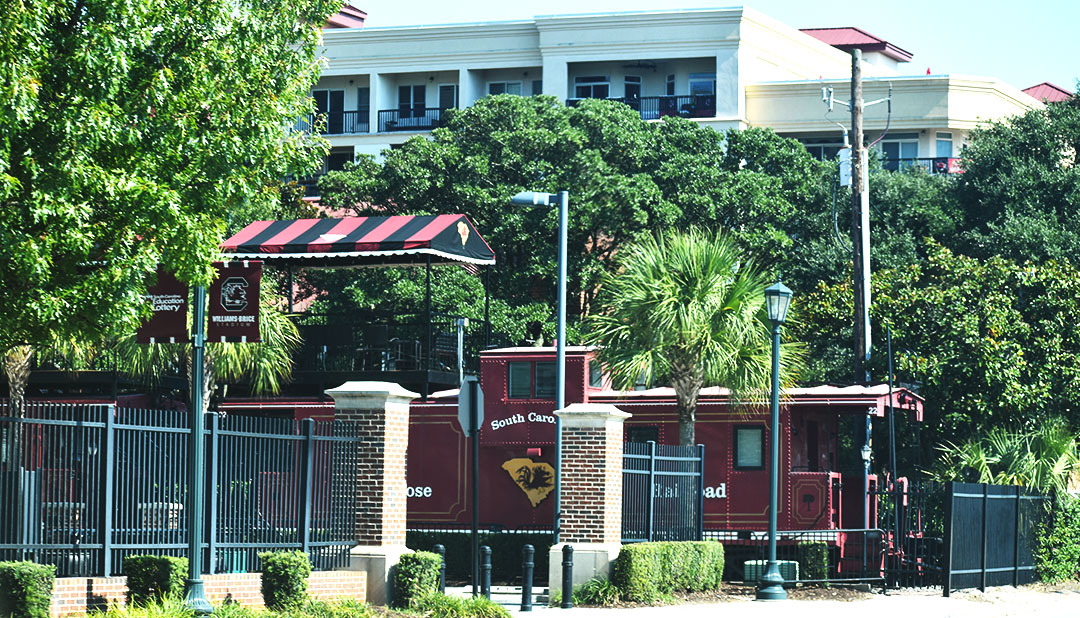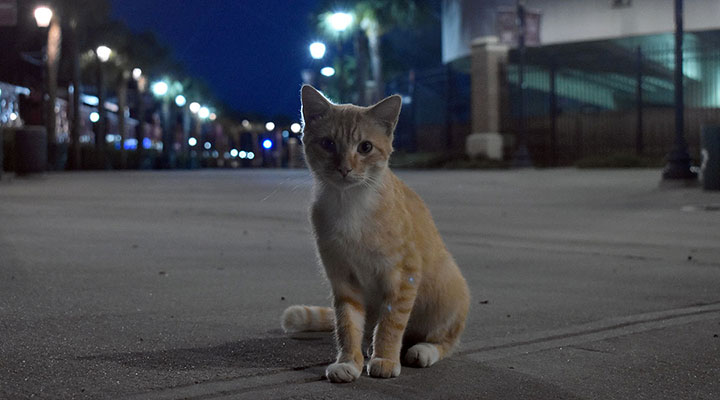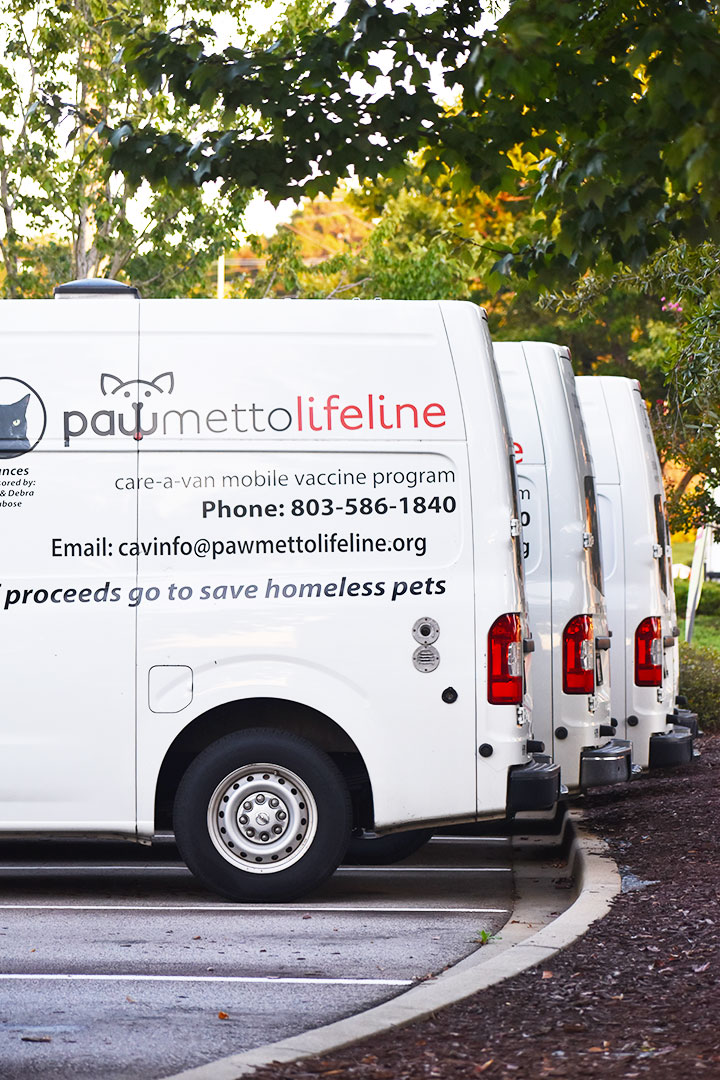The Cockabooses, located right behind the U of SC Williams-Brice stadium, where a community of feral cats often reside. Photo by Ashton Van Ness
Nikol Gallivan and her husband have been feeding and caring for a colony of 20 feral cats that reside near Williams-Brice Stadium and the Cockabooses for around 5 years.
Earlier this month, a kitten in the colony tested positive for rabies.
The kitten was submitted to DHEC for testing on Sept. 13 and was confirmed to have rabies on Sept. 24, according to a statement from DHEC.
“It tested positive for rabies, so the poor little thing had to be euthanized,” Gallivan said. “It couldn’t help it. If you’ve ever seen an animal with rabies, they don’t know what they’re doing. I felt so bad about it.”
The Gallivans immediately started figuring out how to save some of the cats they had spent the last few years growing to love.
“Luckily, the majority of our colony were TNRs,” Gallivan said.
TNR cats are feral cats that have been trapped, neutered and returned to where they live. When these cats are trapped, they are also vaccinated against rabies, which means a rabies exposure would not necessarily mean the cats would have to be put down.
“Unfortunately, all of the non-TNR’s had to be euthanized,” Gallivan said. “There are nine of the TNRs that we have been able to find a place for, for the 180-day quarantine. These cats have already had their rabies shot before. Denise Wilkinson at Pawmetto Lifeline was nice enough to give these pets their rabies booster before going into quarantine.”
Gallivan had to work quickly with DHEC and the city, among others, to save the TNR cats.
According to a statement from DHEC, “In this situation and similar situations, DHEC works with local animal control and local municipalities to ensure animals that were potentially exposed to rabies are either quarantined, tested, or otherwise removed from the area in the interest of protecting public health.”
To have cats transferred to her by the city, Gallivan had to have a place for the cats to go immediately to quarantine and a vet to give the cats a rabies booster.
“It’s been a lot of coordination and a lot of effort on many people’s parts, and had it not been for the efforts of all of these people, none of these cats would have been saved,” Gallivan said.
Gallivan stressed that the public should not fear feral cats.
“There needs to be more education so that the public knows about community cats and how helpful they are but then also knows the signs of when, not just community cats but any other animal, has symptoms so that you can call the right people and not put yourself, or anybody else, in harm,” Gallivan said.
The American Society for the Prevention of Cruelty to Animals, also known as the ASPCA, offers information about caring for community cats on its website. The nonprofit says that Trap-Neuter-Release is the best method for keeping populations down.
For more information about rabies, visit DHEC’s website.





